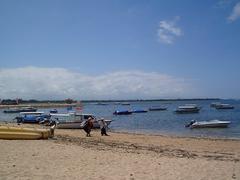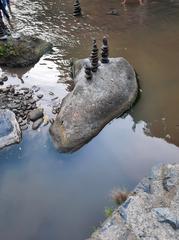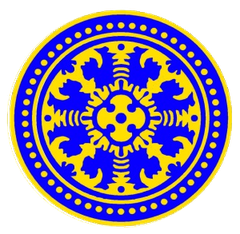
Bali Museum Visiting Hours, Tickets, and History Guide
Date: 04/07/2025
Introduction
The Bali Museum, located in the heart of Denpasar, stands as the island’s foremost cultural institution, dedicated to preserving and presenting Bali’s rich heritage. Founded in the early 20th century to safeguard local traditions amidst rapid modernization, the museum offers a comprehensive journey through Balinese art, history, and spirituality. Its strategic location near landmarks such as Puputan Square and Jagatnatha Temple places it at the center of Denpasar’s vibrant cultural district, making it a must-visit for travelers seeking insight into Bali beyond its famed beaches. The museum’s architecture, inspired by Balinese palaces and temples, immerses visitors in an authentic setting that enhances the narrative of its diverse collections—from prehistoric artifacts to contemporary artworks. With accessible facilities, affordable ticket prices, guided tours, and proximity to other historical sites and bustling markets, the Bali Museum is an essential stop for cultural exploration in Bali (Bali Green Tour, bali.com, Trip.com).
Origins and Establishment
The Bali Museum, officially Museum Negeri Propinsi Bali, was established in 1932 as a response to concerns about the erosion of Balinese cultural heritage under colonial rule and modernization. Local leaders collaborated with the Dutch colonial authorities to protect the island’s unique artifacts, traditions, and historical records (Bali Green Tour). Situated on Mayor Wisnu Street, adjacent to Puputan Square and Jagatnatha Temple, the museum’s location underscores its pivotal role as a guardian of Balinese identity (Tunjung Boutique Resort).
Architecture and Layout
The museum’s main building, Bale Pendet, exemplifies traditional Balinese architecture, featuring intricately carved wooden doors, ornate stone gates, and lush courtyards that evoke the grandeur of royal palaces. This design integrates Hindu-Balinese motifs and practical elements suited to Bali’s tropical climate, setting the stage for cultural immersion from the moment visitors enter (Tunjung Boutique Resort).
The complex is organized into thematic pavilions named after Balinese regencies—Tabanan, Karangasem, and Buleleng—each highlighting unique aspects of Balinese history and culture. Additional sections such as the library, restoration rooms, and a small theater for performances further enrich the visitor experience (bali.com).
Collections and Cultural Significance
The museum’s extensive collections trace Balinese history from prehistoric times through the classical and modern eras:
- Prehistoric Artifacts: Includes stone tools, grave sarcophagi, and clay stupikas indicating ancient Hindu-Buddhist connections (Bali Green Tour).
- Classical and Ceremonial Objects: Features bronze statues, ceremonial masks like the Sidakarya, traditional keris daggers, Endek textiles, and religious paraphernalia.
- Ethnographic and Daily Life Exhibits: Displays traditional textiles, household tools, agricultural implements, and ceremonial costumes.
- Artistic Heritage: Highlights paintings, wood and stone carvings, wayang kulit shadow puppets, and musical instruments.
- Contemporary Art: Showcases rotating exhibitions and modern Balinese crafts, emphasizing the museum’s role as a living cultural hub (Tunjung Boutique Resort, baliuntold.com).
Visiting Hours and Ticket Information
- Hours: Open Tuesday to Sunday, 8:00 AM – 3:30 PM. Closed on Mondays and major Balinese public holidays (The Tourist Checklist).
- Tickets: Adults: IDR 50,000–75,000 (approx. USD 3–5). Children and students receive discounted rates; local residents and groups may have further reductions. Payment is typically in Indonesian Rupiah; bring cash for convenience (TravelTriangle, Rafting Bali).
- Accessibility: Main exhibition areas are wheelchair accessible via ramps, but some older pavilions have steps or uneven surfaces. Assistance is available upon request.
Guided Tours and Special Events
Guided tours, available in Indonesian and English, are led by knowledgeable staff and can be booked in advance or upon arrival, depending on availability. These tours provide deeper insight into the exhibits and Balinese culture. The museum also hosts cultural workshops, temporary exhibitions, and performances, especially during the annual Bali Arts Festival (Mchec). Check the official website or social media for current schedules.
Facilities and Amenities
- Restrooms: Clean, well-maintained facilities throughout the complex (TravelTriangle).
- Gift Shop: Purchase books, souvenirs, and Balinese crafts.
- Refreshments: A small shop offers bottled water and snacks; nearby eateries on Jalan Mayor Wisnu and around Puputan Square serve local cuisine (Bali Blog).
- Gardens: Enjoy tranquil gardens with shaded seating and traditional Balinese landscaping.
- Parking: On-site parking for cars and motorbikes is available, but can fill up during peak hours.
Practical Tips for Visiting
- Best Time: Arrive early on weekdays for a quieter experience and to avoid midday heat.
- Dress Code: Wear modest clothing covering shoulders and knees, especially when entering religious areas.
- Photography: Allowed in most areas without flash; check for restrictions.
- Language: Staff speak Indonesian and basic English; exhibit labels are bilingual.
- Weather: Bring sun protection and water, especially if you plan to explore the gardens (Rafting Bali).
- COVID-19: Follow current health protocols, including mask-wearing and use of hand sanitizer stations.
Navigating the Museum
Upon entry, visitors receive a map to navigate the museum’s pavilions:
- Tabanan Pavilion: Prehistoric and early history, with stone tools and sarcophagi.
- Karangasem Pavilion: Daily life, textiles, and ceremonial objects.
- Buleleng Pavilion: Art and spiritual heritage—paintings, carvings, and sacred artifacts.
- Timur Pavilion: Archaeological finds and ancient Balinese art (Water Sports Bali).
Outdoor paths connect the pavilions, and gardens provide a peaceful respite between exhibits.
Nearby Denpasar Historical Sites
The museum’s central location facilitates visits to other key attractions:
- Puputan Badung Square: Historical park commemorating Balinese resistance.
- Jagatnatha Temple: Major Hindu temple adjacent to the museum.
- Pasar Badung Market: Bali’s largest traditional market, perfect for shopping and sampling local food (The Tourist Checklist).
Other nearby sites include the Bali Art Center and Bajra Sandhi Monument.
Frequently Asked Questions (FAQ)
Q: What are the Bali Museum’s opening hours?
A: Tuesday to Sunday, 8:00 AM–3:30 PM; closed Mondays and major holidays.
Q: How much are the tickets?
A: Adults: IDR 50,000–75,000; children/students receive discounts.
Q: Is the museum wheelchair accessible?
A: Main areas have ramps; some pavilions have steps. Assistance available.
Q: Are guided tours available?
A: Yes, in Indonesian and English; book in advance or at the entrance.
Q: Can I take photos?
A: Photography is allowed, except with flash in certain areas.
Q: What’s the best way to get there?
A: Taxis, ride-hailing apps (Grab, Gojek), and local bemo minibuses are recommended. Parking is available on-site.
Enhance Your Visit
- Allocate 1–2 hours for the museum.
- Combine with trips to nearby landmarks for a full cultural day.
- Check the museum’s website or social media for updates.
Visuals and Digital Resources
High-quality images and virtual tours are available online and on the museum’s platforms. Use descriptive alt tags such as “Bali Museum traditional architecture” and “Balinese cultural artifacts” to aid accessibility and searchability.
Further Reading and Related Guides
Call to Action
For the latest updates on Bali Museum visiting hours, ticket prices, and events, download the Audiala app. Explore more cultural guides on our website and follow us on social media for exclusive tips to enrich your Bali adventure.
Summary and Final Tips
The Bali Museum offers an engaging, educational, and accessible gateway into the island’s artistic and historical legacy. Its thoughtful curation, authentic Balinese architecture, and prime location near Denpasar’s major attractions make it an ideal destination for culture seekers. Plan ahead, respect local customs, and make the most of your visit by leveraging digital tools and guided experiences. For further details and the most current information, refer to the museum’s official website and trusted local tourism sources (The Tourist Checklist, Bali Untold, Rafting Bali).
Sources
- Bali Green Tour
- bali.com
- Trip.com
- Tunjung Boutique Resort
- Bali Untold
- Bali Blog
- TravelTriangle
- The Tourist Checklist
- Water Sports Bali
- Rafting Bali
- Mchec









